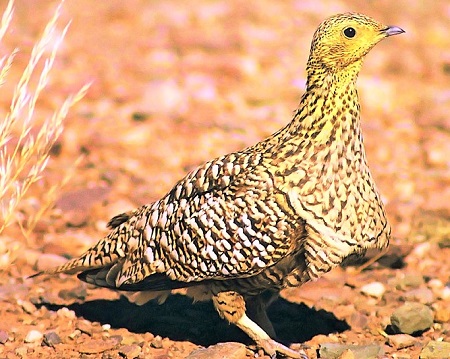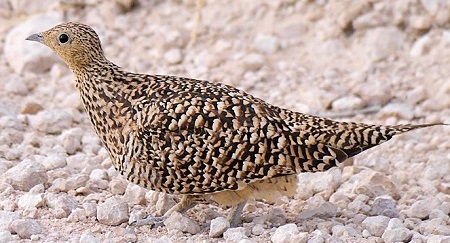Namaqua Sandgrouse
The Namaqua Sandgrouse is a Sandgrouse species, which inhabits arid regions of south-western Africa. It’s a sedentary species in the northern part of its range but southern populations are migratory, moving northwards to Namibia and Botswana.
The male Namaqua sandgrouse has orange-buff head, throat and chest, followed by a narrow band of white and dark brown. The back and the wings are mottled-brown with large white specks, and there are two long black filaments extending from the olive-brown tail. Female Namaqua sandgrouse are more cryptic, being generally various shades of brown patterned with white specks. Male birds have a patch of yellow skin around their eyes, while those of the females are usually bluish-grey.
The male Namaqua sandgrouse is easily identifiable in its habitat, but it’s different with the female Namaqua sandgrouse. As, it might be confusing to distinguish her from the female Double-Banded Sandgrouse and the female Burchell’s Sandgrouse, which share the same range. But, generally the other females are much browner.
The breading season of the Namaqua sandgrouse may take place any time of the year according to rainfalls. The nest is usually a scrape in the earth, scantily lined with dried plant material and contains 2 – 3 eggs. Both sexes of the Namaqua sandgrouse incubate the eggs for 22 days and rear the chicks till they become independent. The chicks grow rapidly, and are fully feathered at three weeks and able to fly at six weeks.
| Place of origin | Angola, Namibia, Zimbabwe, Botswana, Lesotho and South Africa |
| Use | Preservation |
| Weight | Male: 170 – 190 g female: 150 – 190 g |
| Egg color | Pinkish-grey with reddish-brown markings |




